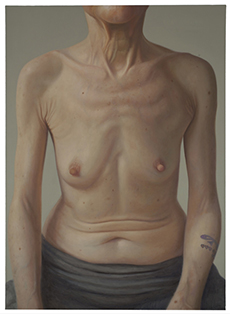Submission Guidelines for Essays
ezzo Cammin welcomes submissions of essays on any aspect of poetry in form by women. Suggested topics include studies of the work of a single author or group of authors; studies of how women have treated a particular form (such as the sonnet, or experimental forms); or controversies surrounding women writers and form (such as canonization or evolving attitudes toward poetic form).
 |
 Although we do not require essays to focus primarily or exclusively on formal elements of the poetry discussed, we do expect that essay writers will include some commentary on form as a way of illuminating their arguments. Although we do not require essays to focus primarily or exclusively on formal elements of the poetry discussed, we do expect that essay writers will include some commentary on form as a way of illuminating their arguments.
|
|
 |
Although we do not require essays to focus primarily or exclusively on formal elements of the poetry discussed, we do expect that essay writers will include some commentary on form as a way of illuminating their arguments. We do not limit our purview to the twentieth century, or to poetry in English; however, we do ask you to provide translations if you submit an essay on women poets who write in languages other than English. Also, for essays accepted for publication in Mezzo Cammin, we may ask the writer to assist us in obtaining permission to quote coyrighted material. Unfortunately, at this time we do not pay for essays. We plan to run special features on a particular author or topic at least every other issue; the new topic will be announced in the preceding issue. Our preferred length is 5000 words (20 pages) but shorter or longer pieces may be considered. Please follow MLA citation format.
Please submit original, unpublished essays or queries as e-mail attachments in RTF (rich text format), to: kbridgford@yahoo.com
Poetry Submission Guidelines
Mezzo Cammin welcomes submissions of poetry that pays particular consideration to form. Poems in structured forms are especially welcome, but poems that use form in interesting and experimental ways are also encouraged.
Please submit four-six unpublished poems as e-mail attachments in RTF (rich text format) to kbridgford@yahoo.com.
|
|
 |
 |
|
|
 |
 |
Jenna Le, Anne-Marie Thompson, and Chelsea Woodard join editor Kim Bridgford at the tenth-anniversary Mezzo Cammin panel at the Poetry by the Sea conference.
Sophia Galifianakis was the recipient of the Mezzo Cammin scholarship.
|
|
|
 |
|
|
|
 |
Corpus VI was formed in 2003, when six women figurative painters, who studied together at the Pennsylvania Academy of the Fine Arts, united to curate, exhibit and present our work to the public on our own terms, and launch our artistic careers. The name was chosen because it reflected our shared commitment to figurative representation. Clarity Haynes, Elena Peteva, and Suzanne Schireson were three of the founding members of the group, which organized an inaugural, self-titled show at Philadelphia's Highwire Gallery in the spring of 2005. The exhibition essay was written by Jeffrey Carr, Dean of the Pennsylvania Academy of the Fine Arts. The exhibition was very well-attended and reviewed in several art publications.
The experience of working together to successfully realize this exhibition, as well as the continuous dialogue and exchange of ideas on contemporary figuration, has proven to be greatly valuable to us. Ten years after graduating from PAFA, as our careers have taken us to different locations across the United States, three of the original members, Clarity Haynes, Suzanne Schireson, and Elena Peteva, have come together to reinvent the collective by inviting one artist each to be part of this exhibition that will begin at the New Bedford Art Museum in fall 2015 and travel to other institutions.
Holly Trostle Brigham, Stacy Latt Savage and Laurie Kaplowitz are professional figurative artists, whose strong artistic visions enrich the collective's range and explorations of contemporary representation. We are excited at the prospect of seeing our work all together in new configurations, creating new dialogues. Holly Brigham creates imaginative, narrative watercolors, which tell a feminist story, inserting her artistic persona into art historical narratives and mythologies. Laurie Kaplowitz uses textured paint to create personages that hint at the soul within, alluding to rituals of marking, scarring and adorning the body as an integral part of our human identity and presentation. Stacy Latt Savage combines figurative elements with fabricated structures and shapes to create objects that capture what it looks like to feel human and the complexities of our human condition. Clarity Haynes casts new light on ideas of beauty, femininity and embodiment through her realistic painted portraits of the female torso. Elena Peteva creates allegorical representations of our individual and social states through the human figure and subtle, charged, incomplete signs that invite the viewer's attempt for interpretation. Suzanne Schireson is influenced by her great-grandfather's autobiography as an early plastic surgeon and her paintings examine contradictions surrounding the birth of cosmetic surgery, such as the power to heal and the fostering of insecurity.
|
|
|
|
|
|
 |
|
 |
|
|
|
|
